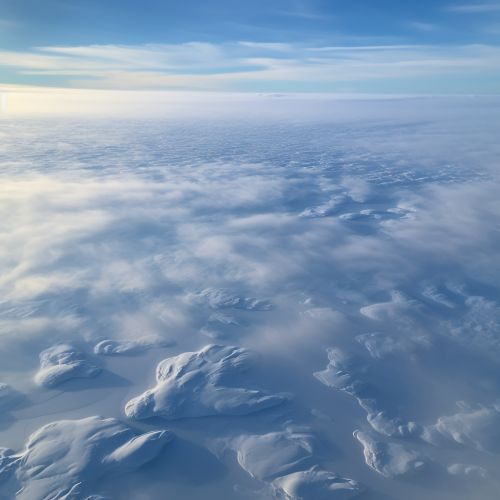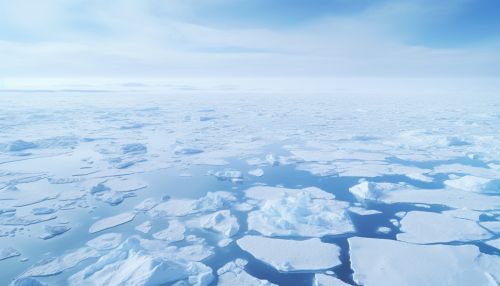Sea ice
Introduction
Sea ice, a critical component of the Earth's climate system, is a type of frozen ocean water. It forms in the polar regions, primarily in the Arctic and Antarctic, and plays a significant role in global climate regulation, wildlife habitat, and human activities. Sea ice varies in thickness and extent, with seasonal and annual fluctuations influenced by atmospheric and oceanic conditions.


Formation and Characteristics
Sea ice begins to form when the surface of the sea reaches freezing point, typically around -1.8°C due to the salt content in the ocean. The process starts with the formation of tiny ice crystals, or frazil ice, which eventually coalesce into a thin sheet known as nilas. As the temperature continues to drop, the nilas thickens into more substantial ice forms, such as pancake ice or ice floes.
The physical properties of sea ice, including its salinity, density, and strength, are largely determined by its growth rate and the temperature of the surrounding environment. Sea ice is less dense than ocean water, allowing it to float. It also has a lower salinity than the ocean water from which it forms, as salt is expelled during the freezing process, a phenomenon known as brine rejection.
Types of Sea Ice
There are two primary types of sea ice: first-year ice and multi-year ice. First-year ice is sea ice that has formed in the most recent freezing season and has not yet survived a summer melt. It is generally thinner and saltier than multi-year ice. Multi-year ice, on the other hand, has survived at least one melt season and is typically thicker and less salty.
Sea Ice and Climate
Sea ice plays a crucial role in the Earth's climate system. It acts as a reflective barrier, bouncing back a significant portion of the sun's radiation into space, a process known as the albedo effect. This process helps to cool the Earth's surface and moderate global temperatures.
However, as sea ice melts due to rising global temperatures, less sunlight is reflected back into space, and more is absorbed by the ocean. This absorption leads to further warming and more sea ice melt, creating a feedback loop known as ice-albedo feedback.
Sea Ice and Ecosystems
Sea ice provides essential habitats for a variety of wildlife, including polar bears, seals, and numerous species of Arctic foxes and birds. It also supports a unique community of ice-dependent organisms, such as ice algae and other microscopic life forms, which form the base of the Arctic food web.
Sea Ice and Human Activities
Historically, sea ice has been both a challenge and an opportunity for human activities in the polar regions. It has served as a platform for hunting and travel for indigenous peoples, such as the Inuit. More recently, it has implications for global shipping routes, as melting sea ice opens up potential new passages like the Northwest Passage.
Changes in Sea Ice
Long-term observations indicate a significant decline in the extent and thickness of sea ice, particularly in the Arctic, over the past few decades. This decline is largely attributed to rising global temperatures caused by human-induced climate change. The loss of sea ice has profound implications for global climate, polar ecosystems, and human activities.
